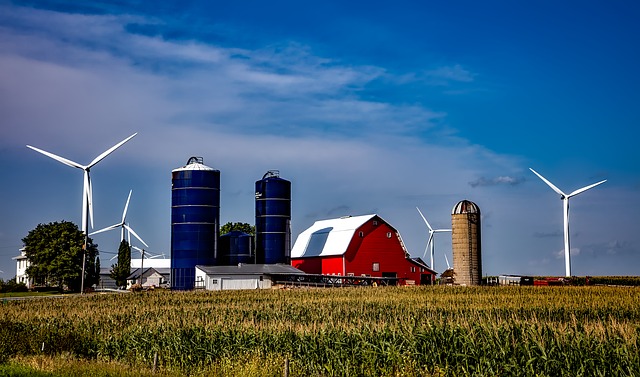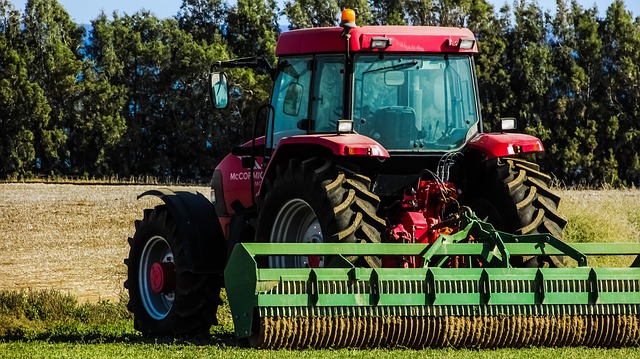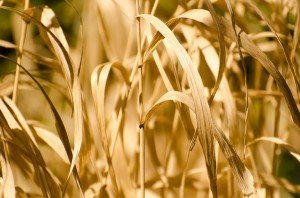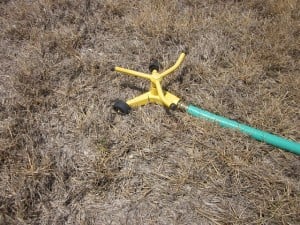
During a recent visit to Wisconsin, President Donald Trump vowed to defend American dairy farmers who’ve been affected by Canada’s trade practices. Canada’s dairy sector is protected by high tariffs and controls on domestic production to support prices that farmers receive.
Last year, Canada’s dairy farmers agreed to sell milk ingredients used for cheesemaking to Canadian processors at prices competitive with international rates. Industry groups in New Zealand, Australia, the European Union, Mexico and the United States complained the new, competitive prices undercut exports to Canada.
The U.S. dairy industry groups want Trump to urge Prime Minister Justin Trudeau to end Canada’s pricing policy that has disrupted many U.S. dairy exports. They’re also asking for a prioritization of dairy market access in North American Free Trade Agreement talks. Trump has already threatened to eliminate the trade agreement with Canada if it doesn’t change its trade policies.
Ottawa’s ambassador David MacNaughton blames U.S. producers’ problems on overproduction rather than Canadian policy. The Dairy Farmers of Canada said it was confident that Ottawa would continue to protect and defend the dairy industry.
Pace of Corn Planting is Behind
According to the U.S. Department of Agriculture’s weekly Crop Progress Report, every corn-producing state in America is behind last year’s planting pace, with the exception of Indiana.
The state lagging behind the most is Missouri, with only 17 percent of its corn crop planted as of Easter Sunday. At the same time last year, Missouri farmers had planted 53 percent of the state’s corn crop.
North Dakota, South Dakota, Michigan, Wisconsin and Ohio didn’t have planting data listed in the Crop Progress Report at the time of publication.
Planting Safety Tips
As farmers prepare for planting season, it is worth remembering the following safety tips:
- Be mindful while transporting goods on public roadways.
- Watch for children, as they’re often attracted to large, noisy equipment.
- Follow instruction labels when applying products such as pesticide, herbicide or fungicide. Consider keeping photos of the instructions on your smartphone for convenience.
- Service all farm equipment regularly.
- Store fuel away from machine sheds and other buildings.
- Get adequate amounts of sleep, and follow a healthy diet.
Read more

Even though farm machinery manufacturers try to ensure that their products are safe by equipping them with safety guards, agricultural work presents many hazards. Many times, workers suffer injuries because of human error from taking a shortcut, ignoring warning signs, not paying attention or not following safety rules.
Here are some of the most common farm machinery hazards, as well as several safety recommendations to reduce your risk of injury:
Shear Points and Cutting Points
- Shear points occur when the edges of two objects move close together and can cut soft material (example: auger).
- Cutting points occur when an object moves forcefully and is able to cut (example: sickle blade).
To avoid injuries, remain alert while operating machines with shear and cutting points. Also, advise others to watch out because some cutting machinery can throw objects while in use.
Pinch Points
- Pinch points are created when two rotating objects move closely together, one moving in a circle.
- Hands and feet can get caught in pinch points, or other body parts can get pulled into pinch points when loose clothing becomes entangled in the machine.
To avoid injuries, wear tight-fitting clothing and never reach over or work near rotating parts. Also, identify places where pinch points can occur and avoid these areas.
Wrap Points
- When exposed machine parts rotate, they create wrap points. Loose clothing can get caught in the moving parts, and consequently pull workers into the machine.
To avoid injuries, shield potential wrap points before beginning your work. If wrap points cannot be shielded, paint them a bright color to remind yourself that they are there.
Crush Points
- Crush points occur when objects move toward one another, or one object moves toward a stationary object. Workers can be crushed in between.
Block equipment securely to avoid fatal crushing injuries.
Free-wheeling Parts
- Some equipment with moving parts continues to spin after being shut off.
To avoid injuries, wait until the machinery has completely stopped before touching it. This can take several minutes.
Hydraulic Systems
- When servicing, adjusting or replacing parts on machines with hydraulic systems, workers can face high-pressure blasts of hydraulic oil. This can cause injury and/or burns to the skin.
To avoid injuries, do not inspect hydraulic hoses with your hands because the hydraulic fluids can puncture the skin.
Take time to become familiar with the potential hazards of the machinery you work with and remember to always put safety first!
Read more
 In most aspects of life there exists insurance to help in protecting assets in the case of damage or unfortunate loss. When it comes to farms this is no exception; however, the typical business insurance or ordinary car insurance will not meet the bar when it comes to insuring the farm and tractors. It is advisable that if your business is farming or you are thinking about purchasing a weekend farm getaway that you consult with an insurance professional with experience in farming.
In most aspects of life there exists insurance to help in protecting assets in the case of damage or unfortunate loss. When it comes to farms this is no exception; however, the typical business insurance or ordinary car insurance will not meet the bar when it comes to insuring the farm and tractors. It is advisable that if your business is farming or you are thinking about purchasing a weekend farm getaway that you consult with an insurance professional with experience in farming.
There is a famous saying that “knowing is half the battle,” so our goal is to review a few areas that have specific insurance needs. This way when you meet with an insurance professional you can get on the right track. As a general rule farm property is covered under specifically qualified policies to include farm machinery, livestock, farm trailers and even irrigation equipment. Depending on the coverage there may even be automatic coverage for new equipment up to $100,000 for the first 60 days – similar to a new born child being under the parents insurance until the child is individually registered. There are other types of equipment such as antennas and satellite radio devices typical on farms in extremely rural areas. In addition to coverage for these types of items there are other optional coverages that should be considered.
Depending on the exact type of farm things like chicken coups, silos, fences and feed racks have the ability to be covered under a farm policy. For those living in the city the details of a chicken farm and the equipment to keep it functioning are just not a reality. However for the farmer, these are essential aspects to their daily life. This is precisely why insurance companies carefully address all the details involved in farm life. Additional coverages are even defined as to the type of use of the equipment, because farm life can vary drastically.
One of our insurance professionals will review your farm and equipment to explain all available coverages and its intricacies.
Content provided by Transformer Marketing.
Read more
 As with any business, agricultural producers face risks of all kinds. However, the two most important risks facing farmers are yield and price. Fortunately, producers can buy insurance that reduces their exposure to low yields or low prices. Unavoidable risks protected by crop insurance include:
As with any business, agricultural producers face risks of all kinds. However, the two most important risks facing farmers are yield and price. Fortunately, producers can buy insurance that reduces their exposure to low yields or low prices. Unavoidable risks protected by crop insurance include:
* Heat
* Hail
* Drought
* Frost
* Freeze
* Pests
* Excess Moisture
Since the 1930s, crop insurance has been available to agricultural producers in the United States. However, it was in the 1990s that the United States government promoted crop insurance by offering new products and more insurance premium subsidies.
The Risk Management Agency (RMA), is part of the United States Department of Agriculture is the governing authority for the crop insurance program and is in charge of the Federal Crop Insurance Corporation (FCIC). Private insurance companies contract with RMA to service crop insurance sold through independent insurance agencies. As with other disaster insurance programs, such as the National Flood Insurance Program, the private sector sells crop insurance, as the private sector is more efficient and rapidly adjudicates claims.
Crop insurance is unique in that companies selling Federal Crop insurance have a mandate to sell to any farmer, even those who are at high risk, at the same premium set in advance by the Federal government. Even farmers in high-risk drought areas such as California get policies without special underwriting standards or higher premium rates.
Without crop insurance, agricultural producers would have difficulty in achieving financial stability, a more difficult time in getting and repaying loans. Crop insurance allows agricultural producers to help forward marketing.
Essential facts about United States Crop Insurance
* Farmers share in the cost of the program
* Agricultural producers are personally responsible for managing risk
* Under the program, the producer gets tailored risk management solutions
* Quick indemnity pay outs
* The crop insurance program is dynamic; it can quickly adjust and self-correct
* Payments to producers never exceed actual insured losses
* Insurance is allowable collateral for loans
* Growers have no payment limits that cut protection from losses
* Insured growers have the benefit of private sector efficiency
* The program has the flexibility to meet World Trade Organization support limits
The United States crop insurance program provides so much more than just protection from risk. It plays a vital role in keeping the agriculture industry functioning.
Contact our office to make sure you are completely covered.
Content provided by Transformer Marketing.
Sources: http://www2.ca.uky.edu/cmspubsclass/files/cgwalters/Understanding%20Crop%20Insurance.pdf, http://www2.ca.uky.edu/cmspubsclass/files/cgwalters/Understanding%20Crop%20Insurance.pdf, http://www.cropinsuranceinamerica.org/just-the-facts/is-crop-insurance-like-other-forms-of-insurance/, https://www.cropinsurers.com/images/pdf/focus-on-congress/Importance_of_Crop_Insurance_in_the_US.pdf
Read more
 Jose Pineda Rivas could use the cash. He’s got rent to pay, and his tooth hurts so badly he needs to see a dentist.
Jose Pineda Rivas could use the cash. He’s got rent to pay, and his tooth hurts so badly he needs to see a dentist.
But these days, money for fieldworkers like Rivas in this drought-parched stretch of California is about as scarce as rain. And the situation is likely to get worse before it gets better.
The 61-year-old farmhand, who lives in a small home with his wife and a friend’s family, is hardly making enough to cover basic expenses, let alone pricey dental work. He thinks he can afford to get his aching tooth removed, he said. But actually replace it?
Not a chance.
As he tipped back his straw hat and morosely gazed at his flip phone on a recent day, Rivas explained that the crew boss at a nearby tomato farm was supposed to contact him about returning to work. But the call hadn’t come.
It’s the same desperate story all over the Central Valley.
Like many fieldworkers in Mendota, a rural community 35 miles west of Fresno dubbed the Cantaloupe Center of the World, Rivas finds his seasonal job of more than two decades at risk of disappearing because of the statewide drought.
Drought leaves field barren
Fields that normally come to life by April with the planting of tomatoes and melons have been left barren due to insufficient water. And that means less farm work to go around.
“Usually this time of year, we’ll all be going out and weeding and laying irrigation line,” Rivas said in Spanish. “None of that work has happened, and who knows when it will?”
A near-record dry winter has put California in the grip of its worst drought in decades. While many parts of the state have yet to feel any real impact – no cutbacks, no stiff rationing – that’s not the case in the farm towns of the San Joaquin Valley, where water is the touchstone of the economy and underpins the region’s standing as the most agriculturally productive in the nation.
About 20,000 farm jobs statewide stand to be lost this year out of 400,000, the bulk of them in the valley, said Jeffrey Michael, director of the Business Forecasting Center at the University of the Pacific in Stockton.
The estimate does not include thousands of additional jobs supporting agriculture: the truck drivers, packers and processors, as well as the merchants, real estate agents and teachers serving these farm communities.
“We know that this year unemployment is going to be significantly worse than it’s been in a long time,” said Michael, whose job loss projections are based on the amount of farmland likely to be fallowed.
The lost work, he added, will only compound hardship that bedevils many valley towns where unemployment rates consistently rank among the highest in the state.
In Mendota, where about half of the 11,000 residents are in families living below the federal poverty line, the jobless rate stood at 37 percent as of the last count in March, according to state data.
The mayor of Mendota suggested that unemployment could hit 50 percent by summer as the effects of the drought fully play out – a level higher than what was seen during the recent recession.
Read the entire article here.
Content provided by http://www.sfgate.com/news/article/California-drought-Jobs-money-dry-up-in-farm-5431129.php
Read more
 Farmers in California, where Gov. Jerry Brown declared a state of emergency last month, are facing hard choices as a drought threatens to ruin their crops. They must weigh the costs of paying for irrigation against the chance that their fields will never get enough water this season.
Farmers in California, where Gov. Jerry Brown declared a state of emergency last month, are facing hard choices as a drought threatens to ruin their crops. They must weigh the costs of paying for irrigation against the chance that their fields will never get enough water this season.
A striking picture illustrates the severity of the situation, as Northern California’s Folsom Lake, a reservoir northeast of Sacramento, is seen in January at only 17 percent of its capacity. In July 2011, “the lake was at 97 percent of total capacity and 130 percent of its historical average for that date,” according to NASA.
The federal agency says it is working with the California Department of Water Resources to help the state manage its water resources. Last month, NASA released other images showing the drought’s severity. As NPR member station KQED reported, the state’s snowpack is shown in January 2013 and last month. Much of it did not return.
Here are other updates on the situation:
NASA said today that it’s working to share satellite and weather data with California farmers and water officials to help them avoid wasting water, and to use it in the most efficient way possible. The space agency says a trial run of its Satellite Irrigation Management Support system in 2012 and 2013 “demonstrated sustained yields while reducing the amount of water used by up to 33 percent relative to standard practice.”
Growers of almonds — a state crop valued at $5 billion in 2012 — have been pulling trees out of the ground while they’re still in their prime, in desperate actions driven by high water costs. The AP spoke to a grower who watched crews rip 20 percent of his orchard out of the ground. A man who does that work for a living says business is up 75 percent because of the drought, and his crews are working from sunup to sundown.
Forecasts of rain and snow were welcomed by many Californians, as parts of the state could see more rain this week than they’ve had in the previous eight months together. But Time’s Bryan Walsh warns that even with that rainfall, “much of California will still be below average for precipitation this month. Since February tends to be the wettest month for California, that means that the state still has a larger and larger rainfall deficit to make up if this drought is to ever end.”
Contact Scurich Insurance Services today to get a review of your agriculture insurance.
Content provided by http://www.npr.org/blogs/thetwo-way/2014/02/25/282624536/california-s-drought-a-shocking-photo-and-other-updates
Read more



 In most aspects of life there exists insurance to help in protecting assets in the case of damage or unfortunate loss. When it comes to farms this is no exception; however, the typical business insurance or ordinary car insurance will not meet the bar when it comes to insuring the farm and tractors. It is advisable that if your business is farming or you are thinking about purchasing a weekend farm getaway that you consult with an insurance professional with experience in farming.
In most aspects of life there exists insurance to help in protecting assets in the case of damage or unfortunate loss. When it comes to farms this is no exception; however, the typical business insurance or ordinary car insurance will not meet the bar when it comes to insuring the farm and tractors. It is advisable that if your business is farming or you are thinking about purchasing a weekend farm getaway that you consult with an insurance professional with experience in farming.

